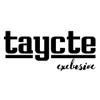Sports drinks can be a complicated category to define these days. In recent years, products like Muscle Milk, Vitamin Water and various energy drinks have crept in to create a spectrum of enhanced beverages—some of which are more useful to athletes than others.
Beverages marketed toward athletic consumers before, during and after demanding exercise are selling better and better by the year, though, and the analysts at Packaged Facts estimate that sports drinks could see $9.3 billion in annual sales by 2017.
That number isn't so crazy when viewed after the last four years. The market rebounded after a downturn in 2009, reaching $6.9 billion in annual sales in 2012, according to research that Packaged Facts published in its June 2013 report "Sports Nutritionals Market in the U.S.: Sports Drinks and Nutrition Bars."

Since 2007, consumers' tastes have changed. The number of consumers using eight or more sports drinks over a 30-day period fell, according to data from Simmons NCS, but consumption picked up among casual drinkers. Then, PepsiCo's Gatorade led a 10.6% lift in category sales in 2010, and these beverages are still going strong.
Despite Gatorade's recent backlash over brominated vegetable oil, the brand is still No. 86 on Forbes list of the world's most powerful brands, worth $4.8 billion. It also commands 46% of the sports drink market, according to Euromonitor International data. Still, Gatorade isn't the overwhelmingly dominant brand that it once was, according to Packaged Facts.
If 6% sales growth continues year over year for sports drinks through 2017, it's easy to see that $9.3 billion mark becoming a reality.
Would you like to see more food and beverage industry news and information like this in your inbox on a daily basis? Subscribe to our Food Dive email newsletter! You may also want to check out our Food Dive's look at America's top 15 nutrition bars.













